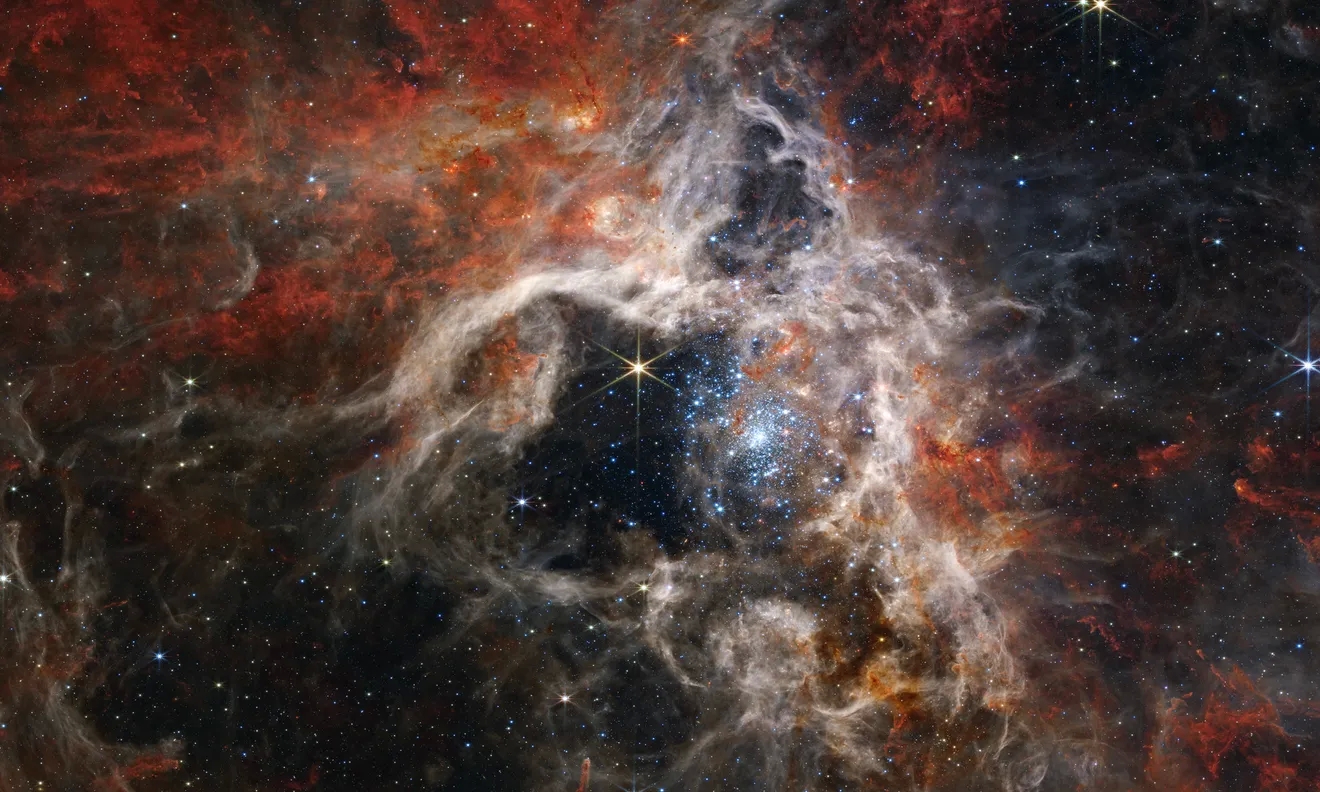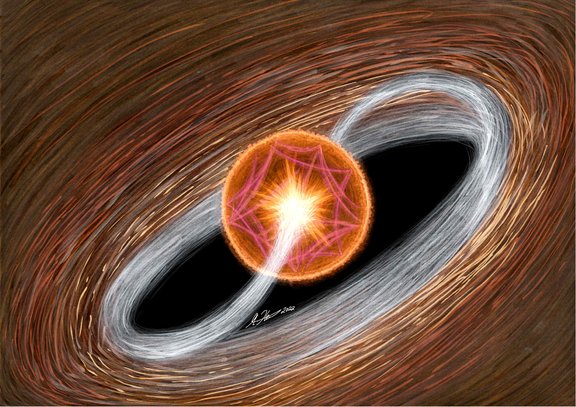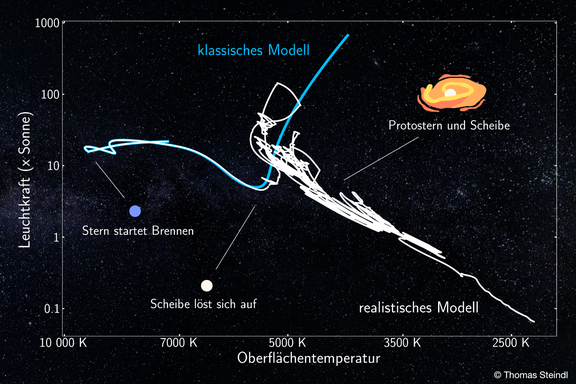We reach more than 65,000 registered users in Dec!! Register Now

Astrophysics: Star-childhood shapes stellar evolution
- September 25, 2022
- 29 Views
- 0 Likes
- 0 Comment
In classical models of stellar evolution, so far little importance has been attached to the early evolution of stars. Thomas Steindl from the Department of Astro- and Particle Physics at the University of Innsbruck now shows for the first time that the biography of stars is indeed shaped by their early stage. The study was published in Nature Communications.
From babies to teenagers: stars in their "young years" are a major challenge for science. The process of star formation is particularly complex and difficult to map in theoretical models. One of the few ways to learn more about the formation, structure or age of stars is to observe their oscillations. "Comparable to the exploration of the Earth's interior with the help of seismology, we can also make statements about their internal structure and thus also about the age of stars based on their oscillations" says Konstanze Zwintz. The astronomer is regarded as a pioneer in the young field of asteroseismology and heads the research group "Stellar Evolution and Asteroseismology" at the Institute for Astro- and Particle Physics at the University of Innsbruck. The study of stellar oscillations has evolved significantly in recent years because the possibilities for precise observation through telescopes in space such as TESS, Kepler, and James Webb have improved on many levels. These advances are now also shedding new light on decades-old theories of stellar evolution.

With a new model to zero hour of adult stars
Stars are called "children" as long as they are not yet burning hydrogen to helium in their cores. At this stage, they are on the pre-main sequence; after ignition, they become adults and move onto the main sequence. "Research on stars has so far focused mainly on adult stars - such as our Sun" says Thomas Steindl, a member of Konstanze Zwintz's research group and lead author of the study. "Even if it sounds counterintuitive at first glance, so far little attention has been paid to the evolution of the pre-main sequence because the phase is very turbulent and difficult to model. It's only the technological advances of recent years that allow us a closer look at the infancy of stars - and thus at that moment when the star begins to fuse hydrogen into helium." In their current study, the two Innsbruck researchers now present a model that can be used to realistically depict the earliest phases of a star’s life long before they become adults. The model is based on the open-source stellar evolution program MESA (Modules for Experiments in Stellar Astrophysics). Inspired by a talk given by astronomer Eduard Vorobyov of the University of Vienna at a 2019 meeting, Thomas Steindl spent months refining the method for using this stellar evolution code to recreate the chaotic phase of early star formation and then predict their specific oscillations. "Our data show that stars on the pre-main sequence take a very chaotic course in their evolution. Despite its complexity, we can now use it in our new theoretical model." Steindl said. Thus, the astronomer shows that the way the star is formed has an impact on the oscillation behaviour even after ignition of nuclear fusion on the main sequence: "The infancy has an influence on the later pulsations of the star: This sounds very simple, but it was strongly in doubt. The classical theory assumes that the time before ignition is simply irrelevant. This is not true: Comparable to a musical instrument, even subtle differences in the composition lead to significant changes in the tone. Thus, our modern models better describe the oscillations in real stars."Konstanze Zwintz is delighted with this discovery and is very optimistic about the future: "I was already convinced about 20 years ago, when I first saw the oscillation of a young star in front of me on the screen, that I would one day be able to prove the significance of early stellar evolution on the 'adult' star. Thanks to the great work of Thomas Steindl, we have now succeeded: Definitely a eureka moment for our research group and another milestone for a better understanding of the growth steps of stars."
List of Referenes
- Thomas Steindl, Konstanze Zwintz, Eduard Vorobyov. The imprint of star formation on stellar pulsations. Nature Communications, 2022; 13 (1) DOI: 10.1038/s41467-022-32882-0
Cite This Article as
No tags found for this post









